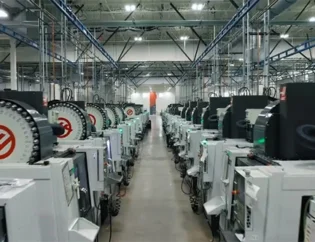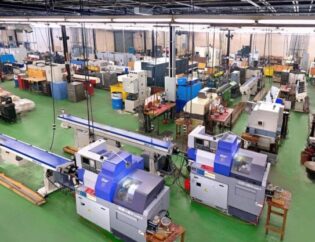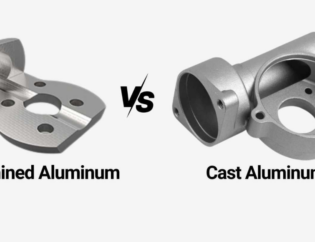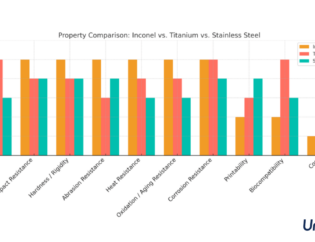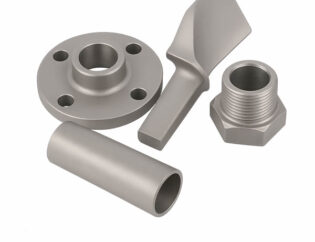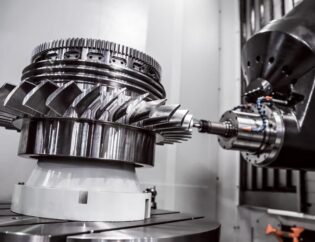Robotic arm CNC (Computer Numerical Control) technology is revolutionizing the manufacturing landscape, offering precision, efficiency, and versatility. As industries increasingly adopt automation, understanding robotic arms becomes essential for engineers, designers, and hobbyists alike. This guide delves into the intricacies of robotic arm CNC systems, exploring their components, programming, and applications.
Readers can expect to learn about the fundamental principles behind robotic arm CNC, including how they operate and the various types available. We will cover essential programming techniques, enabling users to harness the full potential of these machines. Additionally, the guide will highlight real-world applications, showcasing how robotic arms enhance productivity across diverse sectors.
By the end of this guide, readers will have a comprehensive understanding of robotic arm CNC technology, empowering them to implement and innovate within their own projects. Whether you are a beginner or an experienced professional, this resource will equip you with the knowledge needed to navigate the exciting world of robotic automation.
A Comprehensive Guide to CNC Robotic Arms
Deploying a CNC robot arm is a way to optimize modern machining. According to recent stats, the global size of CNC machines is forecasted to achieve $132.93 billion by 2030. Nearly $16 billion every year for eight years, impressive data, isn’t it? While keeping up with the trend of reaching the highest production level, there is always a need to maximize both traditional manufacturing and small-batch production. A CNC machine tending robot will help you combat multiple challenges.
Understanding CNC Robotic Arms
CNC robotic arms are automated machines designed to perform tasks such as loading and unloading materials in CNC machines. They enhance efficiency, reduce labor costs, and improve safety in manufacturing environments. Companies like Standard Bots and FANUC America are leading the way in providing innovative robotic solutions tailored for various industrial applications.
Technical Features of CNC Robotic Arms
When considering a CNC robotic arm, it’s essential to understand its technical features. Below is a comparison table highlighting key specifications:
| Feature | Standard Bots RO1 | FANUC CRX-10iA/L | ArcDroid CNC | Universal Robots UR10e |
|---|---|---|---|---|
| Payload Capacity | 18 kg | 10 kg | 5 kg | 12.5 kg |
| Reach | 1300 mm | 1200 mm | 1000 mm | 1300 mm |
| Programming | No-code software | User-friendly interface | Drag-and-drop programming | Intuitive programming |
| Integration | Seamless with Haas CNC | Plug-and-play options | Compatible with various CNCs | Flexible integration |
| Safety Features | Built-in sensors | Advanced safety sensors | Collision detection | Force-limiting technology |
Types of CNC Robotic Arms
CNC robotic arms come in various types, each suited for specific applications. The following table outlines the differences between some common types:
| Type | Description | Best Use Cases |
|---|---|---|
| Articulated Robots | Multi-jointed arms providing flexibility | Complex tasks requiring high precision |
| SCARA Robots | Horizontal arms ideal for assembly tasks | Fast pick-and-place operations |
| Delta Robots | Parallel robots designed for speed | High-speed packaging and sorting |
| Collaborative Robots | Safe to work alongside humans | Tasks requiring human-robot collaboration |
Advantages of Using CNC Robotic Arms
CNC robotic arms offer numerous advantages that can significantly enhance manufacturing processes. They improve operational speed, product quality, and safety. By automating repetitive tasks, companies can reduce labor costs and minimize human error.
Enhanced Efficiency
Robotic arms can operate continuously without fatigue, ensuring that CNC machines are utilized effectively. This leads to increased productivity and reduced downtime, allowing manufacturers to meet tight deadlines and customer demands.
Improved Safety
Safety is a critical concern in manufacturing environments. CNC robotic arms are designed with built-in safety features that minimize risks associated with human operators working near heavy machinery. For instance, collaborative robots can slow down or stop when a human enters their workspace.
Cost-Effectiveness
Investing in CNC robotic arms can lead to significant cost savings in the long run. While the initial investment may be substantial, the reduction in labor costs and increased efficiency often result in a quick return on investment. Companies like Allied Automation provide solutions that are both affordable and effective.
Applications of CNC Robotic Arms
CNC robotic arms are versatile and can be used in various applications across different industries. Some common applications include:
– Machine Tending: Automating the loading and unloading of CNC machines to enhance productivity.
– Assembly: Assisting in the assembly of components in manufacturing lines.
– Material Handling: Moving materials from one location to another within a facility.
– Quality Control: Performing inspections and quality checks on finished products.
Conclusion
CNC robotic arms are revolutionizing the manufacturing industry by providing efficient, safe, and cost-effective solutions for various applications. With advancements in technology, companies like Standard Bots, ArcDroid CNC, FANUC America, and Allied Automation are leading the charge in making these innovations accessible to businesses of all sizes. As the demand for automation continues to grow, investing in CNC robotic arms will be crucial for staying competitive in the market.
FAQs
1. What is the primary function of a CNC robotic arm?
CNC robotic arms are primarily used for automating tasks such as loading and unloading materials in CNC machines, enhancing efficiency and productivity.
2. How do CNC robotic arms improve safety in manufacturing?
CNC robotic arms are equipped with safety features that allow them to operate alongside humans without posing risks, such as slowing down or stopping when a person enters their workspace.
3. What are the different types of CNC robotic arms?
The main types include articulated robots, SCARA robots, delta robots, and collaborative robots, each suited for specific applications.
4. How can I choose the right CNC robotic arm for my business?
Consider factors such as payload capacity, reach, programming ease, integration capabilities, and safety features when selecting a CNC robotic arm.
5. What are the cost implications of investing in CNC robotic arms?
While the initial investment can be high, the long-term savings in labor costs and increased efficiency often lead to a quick return on investment.

